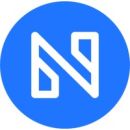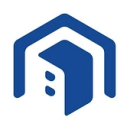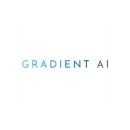The distance between the tech in a sci-fi movie and the tech in a new product demo used to seem far apart, a little like standing on opposite sides of the Grand Canyon. Today, it’s more like a crack in the sidewalk.
There are pieces of tech in 2024 that could have been borrowed straight from the set of a sci-fi blockbuster.
Earlier this year, Disney Imagineers released a video showing an omnidirectional treadmill. The tech looks like a pad on the floor with small honeycomb-shaped tiles. The “tiles” turn independently, allowing multiple people to walk around in a small area without ever bumping into one another.
Apple Vision Pro’s goggles, although still in an early stage, are a first step toward a Ready Player One-type gaming experience, where augmented and virtual reality are truly integrated.
In May, OpenAI demoed the release of GPT-4o — which immediately was compared to the AI assistant in the movie Her. Even Scarlett Johansson saw the similarities to her character in the movie.
And it’s hard not to think of iRobot in the demonstrations of Tesla’s Optimus robot.
The once seemingly far-off tech of the future is quickly becoming the product design of today. But the difference between a dystopian nightmare and an invention that advances humanity is one very large and very complicated step in the development process — intentional, accessible and user-centered design.
Built In spoke with nine tech product leaders who shared a glimpse into how they design and how they put user feedback as their first priority.
Featured Companies
RingCentral offers a variety of cloud-based business communication solutions that cover phone systems, messaging, video conferencing and push-to-talk comms.
How does your team at RingCentral gather customer feedback throughout the product development process?
At RingCentral, our approach to gathering customer feedback evolves throughout the product development stages to ensure effective and consistent insights. In the ideation phase, we conduct in-depth customer interviews to understand needs and pain points, often uncovering ‘aha moments.’
During the validation phase, we focus on finding product-market fit through quantitative and qualitative feedback, employing tools like surveys, concept and usability testing using mocks and prototypes. Before launch, we initiate beta programs and analyze usage data with tools like Mixpanel to gain valuable insights and make necessary adjustments. As products enter the growth phase, it’s important to measure adoption and retention by building feedback loops within the product to stay in tune with customers’ evolving needs.
In what ways does this feedback inform — and benefit — the product development process?
Customer feedback plays a pivotal role in our product development process. It helps us identify and prioritize pain points, validate hypotheses through concept testing and define the right user experience through usability testing.
For example, during customer interviews, our users expressed frustration with having to take notes during phone calls, which caused distractions and led to missing important details. This feedback highlighted a significant pain point: the need for an efficient way to capture call content without relying on memory or manual note-taking. In response, we developed AI-generated meeting notes — leveraging AI to transcribe conversations and summarize key points automatically.
“[Customer feedback] helps us identify and prioritize pain points, validate hypotheses through concept testing and define the right user experience through usability testing.”
During our beta testing phase, customers appreciated how it allowed them to focus on the conversation without the distraction of taking notes, ensuring they didn’t miss crucial information. Our continuous engagement with customers ensures that our products evolve in alignment with their needs, driving meaningful improvements and delivering tangible benefits.
What are some of the biggest lessons your team has learned when it comes to prioritizing customer input?
At RingCentral, we’ve learned several key lessons about prioritizing customer input. First, maintaining an experimental mindset is crucial; we recognize that the first solution may not be perfect. Early testing, especially during the beta phase, allows us to receive critical feedback and make necessary iterations based on real user experiences. It’s also essential to focus on the problem objectively, avoiding confirmation bias by asking neutral questions and actively listening.
Additionally, we’ve discovered the importance of digging deeper into customer motivations and needs, looking beyond immediate requests to identify patterns and trends from both quantitative and qualitative feedback. This helps us understand what truly works and what doesn’t. An idea can come from anywhere. Embrace listening with intent and seek to understand customer feedback by outlining consistent themes. These lessons highlight the value of a customer-focused approach in developing solutions that continuously elevate the user experience.
FourKites created a proprietary algorithm to calculate shipment arrival times through all modes of transportation — including ocean, rail, parcel and over-the-road.
How does your team capture customer feedback?
We have several ways we collect customer feedback, including NPS and CSAT surveys, which measure whether users can meet business objectives, usability and loyalty. Our products and community articles let users give a ‘thumbs up’ or ‘thumbs down’ regarding whether their questions were answered.
Additionally, we host events to capture feedback — one of which is our Innovation Workshops. Hosted annually, these include up to 10 customers across industries and roles to collaborate in a design-thinking session with our UX designers and a product manager. We host four concurrently and have covered topics like “designing the unmanned gate” or “elevating the end-customer experience.” The output of these workshops accelerates our development of solutions.
Another is our biweekly feedback calls. Again, the audience is composed of customers from different enterprise companies, all leveraging FourKites to achieve their business objectives. On these calls, our product team completes discovery or validation designs before we hand them off to our development team. These are wonderful forums to learn more and build better solutions — they also let customers collaborate with peers and influence our roadmap and product.
Is there a community aspect to FourKites’ customer feedback?
We have a robust online customer community where we host the FourKites Idea Exchange. Customers submit enhancement requests and upvote others’ suggestions for product managers to review when grooming their backlog and building their roadmap. These inputs help prioritization, including de-prioritizing requests that don’t receive wide support.
We celebrate customers who suggested and partnered with us on solutions brought to market through our Innovation Partner Program, which includes 98 partners.
“We celebrate customers who suggested and partnered with us on solutions brought to market.”
Cassie Garrison, supply chain manager at HNI Corporation, is one of those innovators — she suggested additional configurations to our notifications set-up, making them more dynamic.
“At HNI, we work collaboratively to make sure our customers have a best-in-class delivery experience,” Cassie told us. “Working with the FourKites team to add additional configurations to the business rules ensures our end users and third-party warehouses know where their truck is at and if it’ll be on time.”
Proactive communication with stakeholders is an objective for many customers — by co-innovating with FourKites, HNI boosted its productivity and helped other customers improve their operations.
What role does customer feedback play in roadmapping for product managers?
While we have many ways to listen to our customers, it’s important for product managers to also be in tune with the macro-environment, be aligned with business objectives and leverage a standardized framework when building a roadmap. We are set up to build customer-centric roadmaps, but prioritization is dynamic — there are times when features or functionality are “not planned” or “not planned yet” and that’s important to communicate to the customer, too. Setting expectations about how customer feedback is being prioritized is key.
Nativo is an adtech company that connects content with customer actions. Nativo engages audiences with existing brand content experiences in editorial environments where and when they are actively engaging with content.
How does your team gather customer feedback?
Reading market trends is critical for building the right product, and customer feedback is pivotal in this process. We focus on gathering direct signals from our SaaS customers and platform users, who often provide feature requests and enhancement suggestions. Our approach includes conducting interviews with a diverse pool of clients — allowing us to test market hypotheses and understand customer needs.
“Reading market trends is critical for building the right product, and customer feedback is pivotal in this process.”
Beyond interviews, we conduct beta testing before general availability, using this period to fix bugs and refine features. During beta testing, we track user behavior and data analytics to guide decisions on additional features or enhancements.
Targeted industry conferences are another valuable source of feedback. Engaging with customers and industry professionals at these events helps us piece together broader industry trends and gain insights into market signals. Many companies showcase their latest products at conferences, providing us with valuable information to stay competitive.
In what ways does this feedback inform the product development process?
Customer feedback is essential for uncovering unknown challenges and opportunities. By fostering a creative brainstorming environment during interviews with open-ended and “what if” questions, we gather authentic insights on industry trends and competitors.
For example, many customers expressed concerns about third-party cookie deprecation and shared their experiences with various cookieless solutions, highlighting their likes and dislikes. This valuable feedback led us to develop our own cookieless predictive audience solution, called SPARC, which directly addresses customer needs and preferences. By listening to our customers, we were able to respond effectively and create a product that meets their expectations.
What are some of the biggest lessons you have learned when it comes to prioritizing customer input?
As a product manager, I’ve learned that we can’t prioritize every customer input, as that would lead to a lack of focus. The biggest lessons are empathy and not building a product for one person. Understanding customers’ perspectives helps gauge the urgency and severity of pain points. When similar feedback comes from multiple customers, it signals a higher-priority issue.
It’s crucial to avoid creating features for a single user or an edge case. Just as a supermarket can’t survive by catering to a single shopper, our product must address the needs of a broad customer base. Our product must serve a significant and strong target audience. Features with narrow use cases require careful evaluation to determine if the issue lies with the product or elsewhere. To build a market-relevant product, we focus on the needs of a substantial and diverse group of users.
Monte Carlo Data provides an end-to-end data observability platform for lending companies like Fox, PagerDuty and CreditKarma.
How does your product team gather customer feedback?
At Monte Carlo, our product team primarily gathers customer feedback through direct conversations with customers. We regularly engage in calls with them, seeking insights into their experiences with our product — both positive and negative. This real-time feedback loop allows us to understand what’s working well and identify areas where customers are encountering friction. We also proactively follow up with customers to delve deeper into specific feedback points raised in previous interactions.
Additionally, we involve customers in our feature-development process by directly reaching out to them for input on new features or improvements. Once a feature is nearing completion, we often release it under a “beta” label to a select group of customers. This beta testing phase provides valuable feedback that helps us refine the feature before a full launch.
“This real-time feedback loop allows us to understand what’s working well and identify areas where customers are encountering friction.”
How does customer feedback guide the product design?
Customer feedback directly influences and benefits our product development process in several ways.
It helps us prioritize features. Feedback helps us understand which features are most important to our customers, allowing us to allocate our resources effectively and focus on high-impact improvements.
Customer feedback helps us identify pain points. Through customer conversations, we can pinpoint specific areas where users are struggling, enabling us to address these issues and enhance the user experience.
Customer feedback also validates new concepts. By seeking feedback on new feature ideas, we can gauge customer interest and gather insights before investing significant development effort.
It helps us improve existing features. Feedback often reveals how we can refine existing features to better meet customer needs and expectations. An example is when we got feedback from several of our customers that our experience around incidents in Monte Carlo was difficult to understand and navigate. This is a core experience to our product and we needed it to be much smoother. We undertook a large redesign of the experience, going all the way back to the basic building blocks. We worked with several of our customers to workshop some different basic concepts around their jobs to be done and got to the foundations. From there we built the feature back up, testing and getting feedback with a wide variety of customers along the way before releasing it in beta to our champions, tweaking it some more, then rolling it out to our full customer base. The end result was a much simpler experience that was very well received by all users.
There are often learning curves with customer feedback. What were some of the key lessons your team learned?
We’ve learned several key lessons regarding prioritizing customer feedback. Not all feedback is created equal. Some feedback is more valuable than others. It’s essential to consider factors like the customer’s experience level, the frequency of the feedback, and its alignment with our product vision.
We learned to look for patterns. Individual feedback points may not always be actionable. However, when we identify recurring themes or patterns across multiple customers, we know it’s something worth addressing.
We learned to balance customer needs with business goals. While customer feedback is crucial, it’s equally important to ensure that our decisions align with our overall business objectives and strategic vision.
We also learned to maintain open communication. We strive to be transparent with customers about how their feedback is being considered and acted upon. This helps build trust and fosters a collaborative relationship.
ActionIQ is a customer data platform that lets marketing teams tap directly into central data sources and activate it anywhere in the customer journey.
What are some of your methods to gather customer feedback?
Within the product and design teams at ActionIQ, prioritizing customer feedback is the cornerstone of our product development process. We use a variety of user research methods — like surveys, one-on-one and group interviews, and usability testing — tailored to the specific needs and timelines of each product. Our engagement teams play a pivotal role in gathering and providing feedback through diverse channels like Slack, email and productboard, while also curating wish-list items for future platform enhancements from our customers. This collaborative effort across the company ensures that we capture a wide range of valuable insights to inform our product decisions, meeting and exceeding user expectations, and delivering maximum value.
What mindset do you try to always return to during the development process?
When integrating customer feedback into our product development, we keep in mind that we’re not the end users. This mindset underscores how valuable customer insights are in questioning our assumptions and better understanding our customers’ needs. Sometimes we’ve received feedback that clashed with our initial designs, prompting redesigns. However, the lessons learned outweighed any extra time spent — having an iterative, feedback-driven approach ensures our products meet customer expectations and provide optimal value.
“This mindset underscores how valuable customer insights are in questioning our assumptions and better understanding our customers’ needs.”
Speaking of lessons, what were some of the key ones for your team?
One of the key lessons we’ve learned is the importance of flexibility. Every customer’s perspective is unique, and their needs evolve over time. By staying open to feedback and keeping those communication channels open with our customers, we can quickly address emerging priorities and deliver solutions that really resonate with our users.
On top of that, we’ve realized the importance of communication and collaboration across teams — regular discussions and knowledge sharing ensures that everyone is aligned on customer insights, leading to more effective prioritization and decision-making. Overall, we’ve learned that listening to customers isn’t just about hearing what they have to say — it’s also about understanding their problems and resolving them by translating their feedback into actionable solutions.
Buildout is designed to help brokerages and enterprises establish stronger client relationships, offering support with prospecting, property marketing, underwriting and commissions.
How does your team gather customer feedback?
Fortunately, our customers provide valuable feedback, enabling us to shape our features effectively. In addition to that feedback, we proactively solicit input through in-app surveys and direct emails. We take that feedback to create mockups illustrating the potential design and associated workflows to present to our customers for further input. This is usually done through customer interviews, but sometimes we launch this in an app for our beta users to test out and monitor before a final release.
How does customer feedback play a role in the development process?
This continuous feedback from customers is essential to our product development process to ensure we’re building and prioritizing the right things at the right time to deliver the most value to our users. By incorporating feedback into our designs and development cycles, we enhance the user experience and reduce the risks of failure.
We’ve recently used customer feedback to develop our Document Center feature, offering users a centralized hub for managing and sharing documents. Building on its success, we’ve gathered more feedback to shape an upcoming feature tailored to our users’ client workflows. Stay tuned for its release.
How does your team pick the best path forward?
Before deciding on the best path forward, it’s crucial to hear out various opinions. Past experiences have taught us that some custom solutions, while initially appealing, can lead to long-term challenges in management and accessibility. Analyzing and validating incoming feedback is key for making informed decisions and ensuring successful product launches. It’s important to acknowledge that not everyone will be completely satisfied, and that’s a natural part of the process, but we can use feedback to satisfy as many as possible.
“It’s important to acknowledge that not everyone will be completely satisfied, and that’s a natural part of the process, but we can use feedback to satisfy as many as possible.”
Gradient AI is an AI and machine learning company that focuses on the insurance industry.
How does your team gather customer feedback throughout the product development process?
The product team at Gradient gathers feedback throughout the customer lifecycle. Product is brought into select pre-sales engagements when the sale relates to a new feature or product. We get involved with ongoing customer support alongside the customer service team to understand how customers are getting value out of our products and how they might benefit from improvements or changes. We engage in customer interviews and product-led quarterly business reviews to maintain the feedback cycle for all customers.
What is your main source for new product development ideas?
Customer feedback is the primary source of all product development at Gradient. Each new product or feature is initiated from feedback we hear from current or prospective customers. The cycle then begins with a voice-of-customer and market feedback exercise before any requirements are put in writing. This process ensures that we are building features that will benefit our customers and helps us be as efficient as possible with our team’s time.
What are some of the biggest lessons your team has learned when it comes to prioritizing customer input?
The biggest lesson we learned is to be sure to get feedback from as many potential users as possible before committing to new work. As a startup, it is tempting to try to prioritize requests from each customer in an attempt to make everyone happy. The reality is that the best approach to making everyone happy is to build products that everyone will love and that starts with getting feedback from as many customers as possible.
“The biggest lesson we learned is to be sure to get feedback from as many potential users as possible before committing to new work.”
Hi Marley is an AI platform built for insurance companies and runs through text messages.
How does your team gather customer feedback?
We work with insurance carrier customers as design partners who are willing to provide feedback, iterate and learn with us as we build the product.
One valuable way we receive feedback is by observing the people who use our product daily and understanding their workflows for new features we are developing. Product works cross-functionally with design to immerse ourselves in their work environment, sitting with them at their desks, watching them process claims and seeing the steps they take to move them forward. Together, we can identify areas that need improvement.
“Product works cross-functionally with design to immerse ourselves in their work environment, sitting with them at their desks, watching them process claims and seeing the steps they take to move them forward.”
Before bringing a feature to a more technical implementation, we craft a prototype and gather a ton of feedback from our design partners in user reviews. We walk through the designs step-by-step. We’ll ask open-ended questions, like “what do you think this button does?” or “what do you think this option means?” We want to make sure our designs make sense to the persona we’re solving for. We create an open line of communication with our design partners. We don’t wait for the next meeting or in-person visit — if they think of something, they’ll let us know right away, which helps us iterate and build our product faster.
When was a time that you saw the impact of customer feedback in your product development process?
An auto total loss is very stressful and requires many touchpoints with the insured throughout the claims process. With our Total Loss Assist product, our design partners are cognizant of the end-user experience, which has helped us build a better solution that, in turn, enables operators to work more efficiently while enhancing customer satisfaction.
For example, the data that comes in during the total loss process triggers different logic or rules for the carrier. We thought we had all the different courses of action that would take place after a rule would trigger, but there was a variation we had not considered. By sitting and observing the claim reps and their workflow, they pointed out a field that indicates if a car is at a residence or a shop — a checkbox that seemed insignificant at first. However, it turns out that communication with the customer looks very different based on each scenario. With this insight, we could quickly iterate and add more workflows based on that one check box, showcase that field in the UI prominently and create separate work tracks based on that data. As a result, the customer experiences more personalized communication and faster cycle times.
How do you prioritize what to work on first?
Every carrier has very specific and different ways of working a total loss case. So, as we’ve built our Total Loss Assist offering, we’ve needed to ensure that this product can fit a multitude of different workflows.
There are certain pieces of feedback that we need to address or build quickly to ensure our customers, particularly for our early adopters and design partners, can use the product efficiently. Those requests are pushed to the top of the list.
We are very lucky to have trusted relationships with our design partners — no feedback or requests are too small to be documented and groomed out. However, we’ve learned to prioritize the requests that can transcend across multiple carriers and benefit all of our customers.
However, sometimes, feedback is unique to a single carrier’s workflow. Luckily, at Hi Marley, we have industry experts who really understand what our customers are trying to accomplish and can collaborate on alternative ways to achieve the same goals or test a hypothesis before introducing a more technical solution. With that insight, we can scale the product to fit the needs of many different types of carriers and their workflows.
Ingage makes a cloud-based presentation software that helps create sales content. Users are able to customize their presentations and the platform comes with analytics to assess the content.
What methods do you use to gather customer feedback?
The Ingage product team employs a variety of techniques and tools to collect customer feedback. Our methodology is tailored to the specific type of feedback we are seeking to gather. In the initial stages of feature development, we conduct customer discovery interviews to gain in-depth insights into the problems we are addressing, test our hypotheses, develop user stories and establish objectives for anticipated outcomes.
As we refine our solutions during the development process, we regularly circle back to these same customers to validate our solutions, review storyboards, and conduct A/B testing. Additionally, we utilize alpha and beta testing to gather feedback over extended periods from various segments of customers. Following a release, we utilize analytics to evaluate the success and adoption of features. These objective metrics are vital in assessing the effectiveness of our solutions.
We also collaborate with other customer-facing teams within the organization. Sales, account managers, customer onboarding and support teams all offer valuable insights and contribute at all stages of development.
Do you have any specific moments where you saw customer feedback benefit the product development process?
Product teams understand the importance of humility to deliver features, build strong customer relationships and drive success for their organizations. While our primary goal is to develop products for our customers, it’s crucial to acknowledge they may not always be aligned on what the best solution is.
“Product teams understand the importance of humility to deliver features, build strong customer relationships and drive success for their organizations.”
A customer asked us for help so their users didn’t need to leave our application to do calculations. This customer had a well-defined process and valid reasons for their specific requirements. Recognizing the value of their suggestion, we implemented the feature tailored to their needs. We soon started to receive numerous requests from similar clients for the same feature. It became apparent there was widespread interest in this functionality, though each client request had unique specifications in mind.
Rather than catering to individual requests, our team engaged in a discovery process that revealed 80 percent commonality in the needs across all clients. The remaining 20 percent required a high degree of customization to align with each customer’s operational methodology. This approach allowed us to meet the needs of the majority while also accommodating the preferences of each client.
What are some of the biggest lessons you have learned in the product development process?
The importance of listening to our customers. It may seem like a simple concept, but truly listening to what customers are saying can provide invaluable information. This means actively seeking out customer feedback from a wide number of sources. By listening to our customers, we can identify patterns and trends that can help shape our decision process.
This does not mean to just accept the direct feedback. Use active listening skills to uncover as much about what the customer is saying. I often use the “Five Whys” technique to extend the discovery conversation beyond the initial. Here are my problem statements. By simply asking why a customer needs what they are asking for, will help to validate and expose more about the root cause.
Prioritizing input is an ongoing process. Customer preferences and needs are constantly evolving, and it is important for product teams to continuously gather, evaluate, and act on customer feedback. This requires a commitment to listening to our customers, being responsive to their needs, and continually refining our products and services based on their input.





















